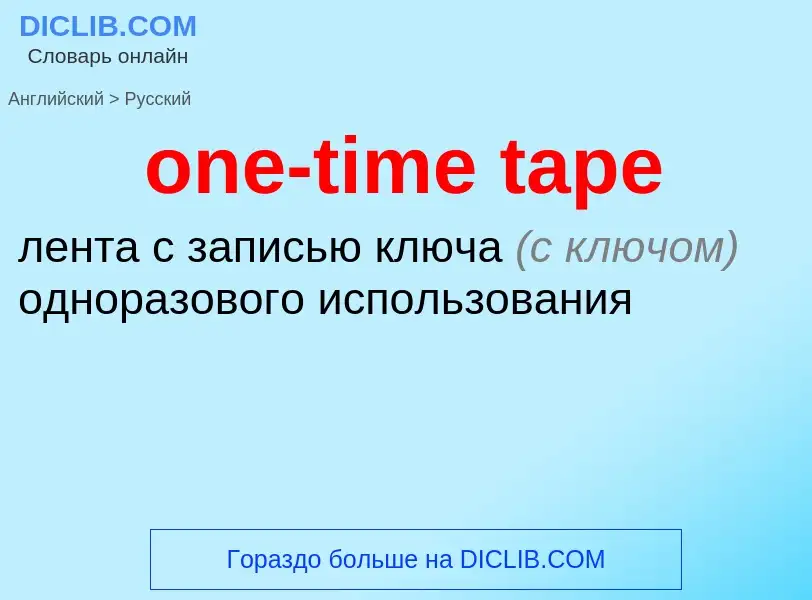Translation and analysis of words by ChatGPT artificial intelligence
On this page you can get a detailed analysis of a word or phrase, produced by the best artificial intelligence technology to date:
- how the word is used
- frequency of use
- it is used more often in oral or written speech
- word translation options
- usage examples (several phrases with translation)
- etymology
one-time tape - translation to russian
[wʌntaim'pæd]
специальный термин
шифрблокнот одноразового назначения
одноразовый код
Definition
Wikipedia
In cryptography, the one-time pad (OTP) is an encryption technique that cannot be cracked, but requires the use of a single-use pre-shared key that is not smaller than the message being sent. In this technique, a plaintext is paired with a random secret key (also referred to as a one-time pad). Then, each bit or character of the plaintext is encrypted by combining it with the corresponding bit or character from the pad using modular addition.
The resulting ciphertext will be impossible to decrypt or break if the following four conditions are met:
- The key must be at least as long as the plaintext.
- The key must be random (uniformly distributed in the set of all possible keys and independent of the plaintext), entirely sampled from a non-algorithmic, chaotic source such as a hardware random number generator; patternless, according to Gregory Chaitin definition. It is not sufficient for OTP keys to pass statistical randomness tests as such tests cannot measure entropy, and the number of bits of entropy must be at least equal to the number of bits in the plaintext. For example, using cryptographic hashes or mathematical functions (such as logarithm or square root) to generate keys from fewer bits of entropy would break the uniform distribution requirement, and therefore would not provide perfect secrecy.
- The key must never be reused in whole or in part.
- The key must be kept completely secret by the communicating parties.
It has also been mathematically proven that any cipher with the property of perfect secrecy must use keys with effectively the same requirements as OTP keys. Digital versions of one-time pad ciphers have been used by nations for critical diplomatic and military communication, but the problems of secure key distribution make them impractical for most applications.
First described by Frank Miller in 1882, the one-time pad was re-invented in 1917. On July 22, 1919, U.S. Patent 1,310,719 was issued to Gilbert Vernam for the XOR operation used for the encryption of a one-time pad. Derived from his Vernam cipher, the system was a cipher that combined a message with a key read from a punched tape. In its original form, Vernam's system was vulnerable because the key tape was a loop, which was reused whenever the loop made a full cycle. One-time use came later, when Joseph Mauborgne recognized that if the key tape were totally random, then cryptanalysis would be impossible.
The "pad" part of the name comes from early implementations where the key material was distributed as a pad of paper, allowing the current top sheet to be torn off and destroyed after use. For concealment the pad was sometimes so small that a powerful magnifying glass was required to use it. The KGB used pads of such size that they could fit in the palm of a hand, or in a walnut shell. To increase security, one-time pads were sometimes printed onto sheets of highly flammable nitrocellulose, so that they could easily be burned after use.
There is some ambiguity to the term "Vernam cipher" because some sources use "Vernam cipher" and "one-time pad" synonymously, while others refer to any additive stream cipher as a "Vernam cipher", including those based on a cryptographically secure pseudorandom number generator (CSPRNG).

